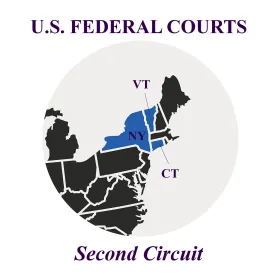Most subcontracts include a flow through provision (also called flow down and incorporation clauses) stating that the subcontractor and contractor are bound by the same obligations as set forth in the prime contract between the contractor and owner. Many jurisdictions interpret such provisions narrowly, as illustrated in a recent case out of New York. In Amerisure Insurance Company v. Selective Insurance Group, Inc., 2023 WL 3311879, the U.S. Court of Appeals for the Second Circuit affirmed the District Court’s interpretation of a flow through clause in a construction subcontract. The Amerisure case involved a dispute over insurance coverage for a personal injury to a subcontractor’s employee on a construction project. The owner of the project sought defense and indemnity from the general contractor (GC) and its insurance company, who in turn sought coverage for the owner as an additional insured under the subcontractor’s policy. The GC based its argument for coverage on the flow through provision in the subcontract.
The prime contract required the GC to procure commercial liability insurance including the owner as an additional insured for claims caused by the GC’s negligent acts or omissions. The subcontract likewise required the subcontractor to procure commercial general liability insurance but required only that the GC be named as an additional insured. However, the subcontract also included a flow through clause, binding the subcontractor to the terms of the prime contract and assuming toward the GC all the obligations and responsibilities that the GC assumed toward the owner. However, the subcontract did not expressly require that the subcontractor name the owner as an additional insured, and in order for the owner to qualify as an additional insured under the subcontractor’s insurance policy, the subcontractor must have agreed in the subcontract to name the owner as an additional insured.
The District Court rejected the GC’s argument that the flow through clause in the subcontract incorporated all the GC’s obligations, including the GC’s obligation to provide additional insurance coverage to the owner. The Court examined the flow through clause under both Virginia and New York law, reaching the same conclusion for each. It relied on a New York case for its rationale, Persuad v. Bovis Land Lease, 93 A.D.3d 831 (2d Dep’t 2012), which provides “under New York law, incorporation clauses in a construction subcontract, incorporating prime contract clauses by reference into a subcontract bind a subcontractor only as to the prime contract provisions relating to the scope, quality, character and manner of work to be performed by the subcontractor.” The Court concluded that because the subcontractor did not expressly assume an obligation to name the owner as an additional insured, the flow through clause would not apply to an additional insured obligation, and therefore the owner was not an additional insured under the subcontractor’s policy.
Contracting parties need to be conscious of overreliance on flow through clauses. In jurisdictions like New York, which narrowly construe these provisions, only the obligations pertaining to the scope of work are likely to flow down to a subcontractor. Disputes involving flow through provisions typically involve important risk management provisions such as insurance, indemnification, and arbitration, which are not necessarily considered to pertain directly to the scope of work. The better approach to ensure an obligation flows down to a subcontractor, regardless of the jurisdiction governing the contract, is to make sure the subcontract itself specifically includes what the parties agree on.



 />i
/>i

